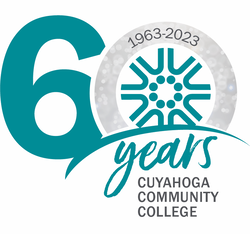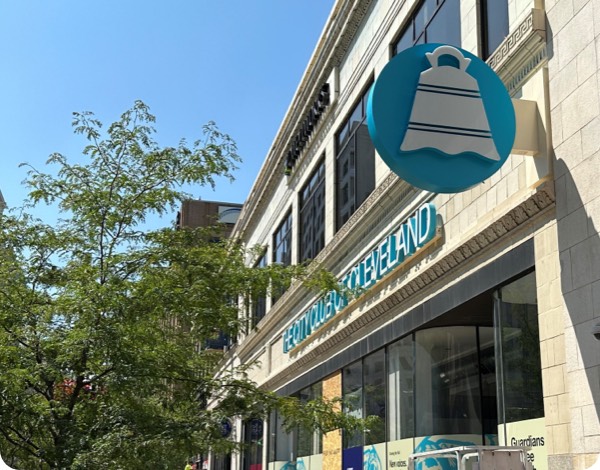Monday, April 06, 2020
Reflections on 25 years in Ohio Education

by Peter Robertson, President, Laurel Springs School
In 25 years as an Ohio resident, I’ve played many roles in public education: parent (both children went to public schools K through 12), taxpayer (I voted for every operating and capital levy presented to me, and rang doorbells for two), school district administrator (Cleveland CIO), charter co-author (E-Prep), and elected Board member (Shaker Heights). I served in the most important role — teacher — for four years before moving to Ohio.
The Ohio legislature’s recent response to the COVID-19 crisis (waiving testing and graduation requirements, waiving physical attendance requirements, freezing voucher eligibility), presents many of the education challenges Ohio had been wrestling with all that time, like scientific specimens for study. Let’s study them now, because we have a lot of work to do when this crisis passes.
First, let’s clearly define the lenses we’re looking through: Learning is something a healthy brain does constantly. Education is the result of learning that society considers important. If someone learns to hack ATMs to steal cash, that is not considered education. But if they learn to program ATMs, that is. Finally, school is an institution to which we have assigned responsibility for education: both facilitating students’ education and judging the sufficiency of the result.
Public schooling institutions serve other roles, too, which cloud our lenses. Schools are real estate ad copy and a burden on residents’ finances. Schools and school districts are significant local employers, and provide physical stewardship for millions of students whose parents have to work. Schools are often the most important or only significant community institutions, and are needed to ensure many students are fed and that they have access to mental and physical health care.
But as educational institutions, Ohio’s schools have been a constant battleground over what education is important and to whom, how that should be judged and how, and how best to ensure all Ohio’s children can access and achieve it. This is not the place to recount all the twists and turns since 1990, when every Ohio 9th grader was first given four standardized tests. Nor since 1998 when every Ohio public school started getting an annual report card. But at a high level, the questions of what test scores are required to advance to fourth grade or earn a diploma, which charter schools should be allowed to remain open, and which school attendance zones should be eligible for vouchers — questions the legislature froze for now — are all grounded in conflicting agendas over what education in Ohio should be.
And while the questions have been frozen, the damage from a lack of resolution has not. My own city, Cleveland Heights, will likely reject on April 28 a levy needed to fund existing services while paying for a surging number of vouchers. This rejection will hurt most our children, at least two-thirds of whom live in or close enough to poverty to be eligible for free meals. And when the full scale of our unfolding economic crisis is understood, our disagreements over these questions will be compounded by desperate struggles over resources and priorities: education vs medicaid, health, human services, and prisons; K-12 education vs. higher education; districts vs. charters and vouchers; instruction vs. buildings, administration, etc.; teacher salaries vs. pensions.
As we “shelter in place” and await the coming fiscal and policy storm, I believe the best preparation is to refocus on basic principles and rethink historical institutional arrangements. For example, our thinking about the education children need for a future we cannot really understand should focus more on feeding and enhancing their ability to learn. In doing that, we should be questioning our ideologies about everything from history to handwriting. And in refocusing on maximal educational opportunity and achievement for all our children, we need to question whether existing institutions can have the best solutions for everyone. We should definitely close under-performing schools that cannot fix themselves, but we should also be sure students and their families have quality choices.
And finally, let’s be sure students and their teachers are at the heart of everything — and that we are supporting them in rethinking everything about what they do and how they use their time to make that investment as productive as it can be. Are we making students sit in classrooms even if their education is best served by training or working or volunteering in the real world? And are we asking — or letting — teachers do things that don’t really advance education and could be done by a computer, like taking attendance or giving students daily feedback on their grammar?
When our economy recovers, attracting and retaining the talented and skilled teachers every child deserves will continue to and will forever cost more than property owners believe they can afford to pay — the underlying problem is called Baumol’s cost disease. Ensuring all our children get the education they deserve while keeping the cost disease at bay will take all our ingenuity, and we cannot let ideology and institutional interests stand in the way. The Center on Reinventing Public Education published a useful white paper specifically on how to approach this a decade ago.
Maybe our schools become community child growth centers, where children can be safe and fed and where learning coaches and counselors help children connect to and engage with the learning resources they need through whatever works for those children at that time with that need — including some of what we now call “teaching classes." The “teachers” who run these places will continue to be the most important people in the community, but their training and roles will be very different. And a student who is self-motivated and thriving with a minimum of adult time will be a success and an opportunity to focus “teacher” efforts and resources on those who need the help.
Maybe that’s not what will work. But we’re not going to figure out the future of education while fighting over standardized testing “cut scores” and the relationship between school report cards and student voucher eligibility. We’re not going to figure it out as long as we're pretending the “thorough and efficient system of common schools throughout the state” promised by the Ohio Constitution can be funded and distributed with our current mess of state and local property tax funding, “community school payments," vouchers, etc.
Maybe this crisis offers a grand bargain opportunity to improve testing and data reporting but eliminate simplistic and punitive judgments about what it means; to create meaningful accountability and oversight over all uses of public education dollars by any institution; overhaul school finance as the state Supreme Court demanded four times; renegotiate existing pensions, properly fund the result, and unshackle future generations of Ohio teachers from the system’s indentured servitude; and stop funding charters and vouchers out of school district budgets so they are unnecessarily demonized by those districts, some of which are building positive relationships with them.
If we can get all that done, maybe we can finally focus on figuring out what education our children and grandchildren need to inherit the future they deserve, and how to help them get it.





